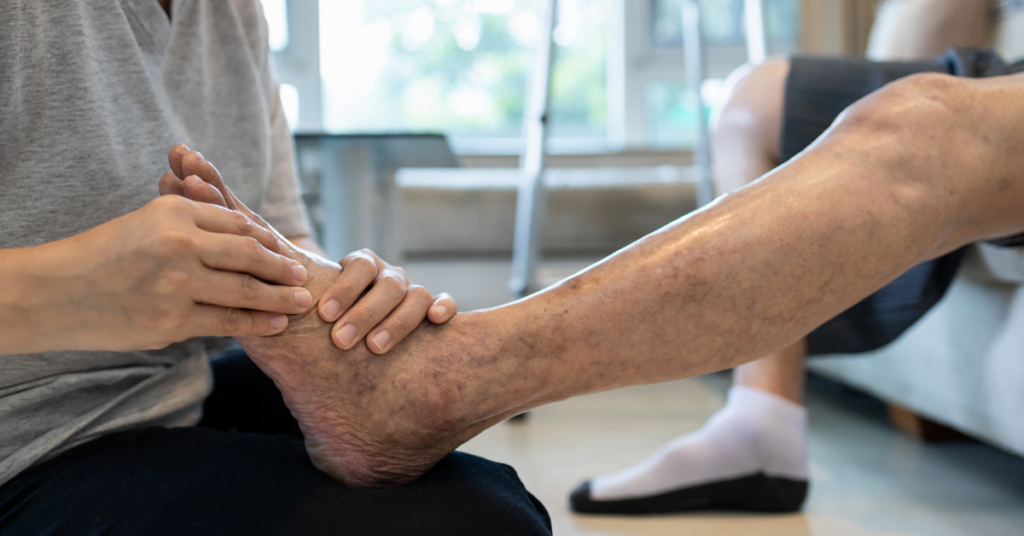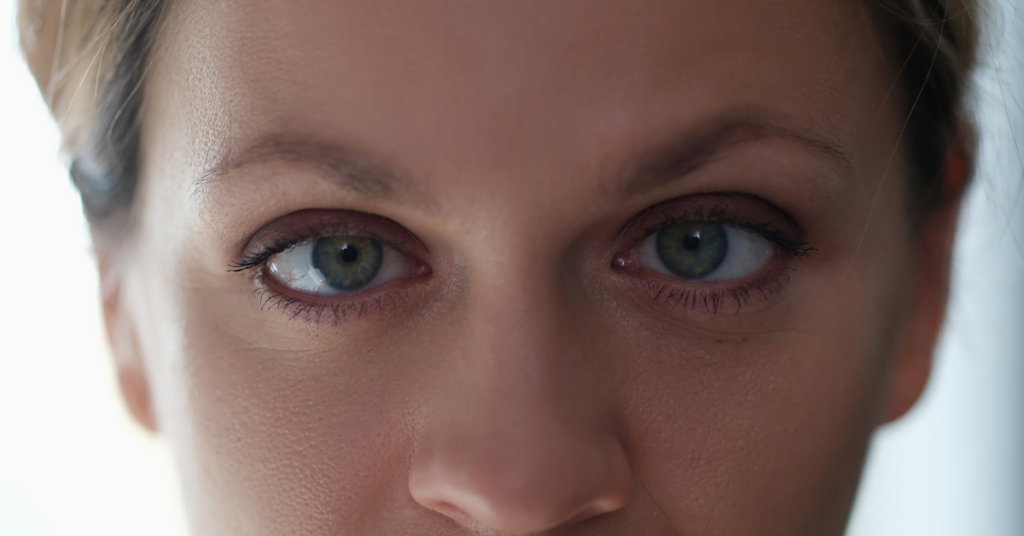Introduction
Botox, often hailed as the go-to solution for minimizing wrinkles and fine lines, is not just a cosmetic superstar; it has emerged as a groundbreaking player in the realm of medical applications. This article delves deep into the world of Botox’s non-cosmetic uses, unveiling its diverse potential in addressing various medical conditions.
While Botox is widely recognized for its role in rejuvenating appearances, its journey from the world of beauty to the domain of medicine has been nothing short of transformative. Derived from the bacterium Clostridium botulinum, Botox’s mechanism of action involves temporarily paralyzing muscles by blocking nerve signals. This unique characteristic has paved the way for innovative medical applications, offering new hope and treatments for patients facing an array of non-cosmetic challenges.
In this article, we explore the myriad ways in which Botox is utilized beyond aesthetics. From providing relief to chronic migraine sufferers to offering solutions for overactive bladders and excessive sweating, the medical potential of Botox is a remarkable testament to science and innovation. Additionally, we’ll delve into the science behind Botox’s action and address common concerns regarding its safety and potential side effects.
As we journey through the various medical applications, we’ll emphasize the importance of qualified medical professionals in administering Botox treatments. Furthermore, we’ll provide insights into the duration of Botox’s effects and its suitability for use in children under specialized care.
The expansion of Botox’s role from beauty enhancement to medical marvel has been transformative, offering new avenues for treatment, pain relief, and improved quality of life. The purpose of this article is to shed light on the profound impact of Botox for non-cosmetic uses and to demonstrate how it is redefining the boundaries of medical innovation.

Understanding Botox
Botox, scientifically known as Botulinum Toxin, is a substance derived from the bacterium Clostridium botulinum. This remarkable neurotoxin has transcended its original purpose as a cosmetic treatment and has made significant inroads into the medical field. To truly comprehend the versatility and effectiveness of Botox, it’s essential to explore its mechanism of action and how it interacts with the human body.
The Science Behind Botox
At its core, Botox operates by interfering with the communication between nerves and muscles. This intricate process involves the release of a neurotransmitter called acetylcholine, which is responsible for transmitting signals from nerves to muscles. When a nerve releases acetylcholine, it triggers muscle contractions. However, this natural process can sometimes become problematic, leading to various medical conditions.
Botox, in its medical applications, serves as an ingenious disruptor of this process. When injected into specific muscle groups, it temporarily obstructs the release of acetylcholine. As a result, the targeted muscles experience a state of temporary paralysis. This action is precisely what makes Botox invaluable in the medical field.
Precision and Application
One of the key aspects that sets Botox apart is its precision. It can be localized to specific muscle groups without affecting the surrounding areas. This precision allows medical professionals to target the source of various conditions directly, providing relief and improvement in a controlled manner.
The ability to precisely administer Botox injections is of paramount importance, especially in medical applications. It underscores the significance of having qualified medical professionals handle the treatment. The careful selection of injection sites and dosages ensures that the desired therapeutic effects are achieved while minimizing any potential side effects.
Temporary Effects
It’s important to note that the effects of Botox are temporary. Over time, the nerve endings recover their ability to release acetylcholine, and muscle function gradually returns to normal. This temporary nature of Botox’s action necessitates periodic treatments to maintain the desired results, especially in chronic conditions.
In essence, Botox’s mechanism of action revolves around its unique ability to block nerve signals and induce muscle relaxation. This mechanism has proven to be a game-changer in various medical applications, offering solutions to a range of non-cosmetic conditions, from chronic migraines and overactive bladders to muscle spasms and eye disorders.
Understanding the science behind Botox is the foundation upon which its diverse medical applications are built. This knowledge highlights the innovative use of this neurotoxin to improve the lives of those suffering from a variety of medical issues, ultimately reaffirming its importance and potential in the world of medicine.

Migraine Management
A Lifeline for Chronic Migraine Sufferers
Migraines are not just ordinary headaches. They are debilitating, often accompanied by intense throbbing pain, sensitivity to light and sound, nausea, and even vomiting. For those who suffer from chronic migraines, these attacks can be a recurring nightmare. However, Botox has emerged as a lifeline, offering significant relief for those plagued by this condition.
The Complexity of Chronic Migraines
Chronic migraines are a specific type of headache disorder characterized by having 15 or more headache days per month for at least three months, with at least eight of those being migraines. These episodes can last for hours or even days, severely impacting a person’s quality of life. The relentless pain and associated symptoms can lead to missed workdays, social isolation, and diminished overall well-being.
How Botox Works in Migraine Management
The mechanism of Botox’s action in migraine management is a testament to medical innovation. When Botox is injected into specific head and neck muscles, it disrupts the nerve signals responsible for triggering migraine attacks. By temporarily paralyzing these muscles, it prevents the muscle contractions and spasms that often contribute to migraines.
This approach is precise and localized, targeting the source of the problem without affecting the entire body. It is essential that Botox injections for migraines are administered by healthcare professionals who are well-versed in the intricacies of this treatment. The skillful placement of injections ensures that the desired therapeutic effects are achieved.
The Impact of Botox on Migraine Frequency and Intensity
The effects of Botox in migraine management can be truly transformative. Many patients who receive Botox treatments report a significant reduction in the frequency and intensity of their migraines. This not only alleviates their suffering but also improves their overall quality of life.
Patients often find that they can return to their daily routines with more confidence, as the fear of an impending migraine attack diminishes. The sense of control and relief that Botox provides is immeasurable.
Regular Follow-Up Treatments
It’s important to note that the effects of Botox in migraine management are temporary. Over time, the nerves recover their ability to transmit signals, and muscle function returns to normal. This means that individuals with chronic migraines may require periodic follow-up treatments to maintain the benefits. These treatments are typically administered every three months to sustain the relief that Botox offers.
In conclusion, Botox has not only revolutionized the world of cosmetic enhancements but has also brought significant relief to those enduring the torment of chronic migraines. Its mechanism of action, which targets the source of the problem, has the potential to transform lives. For many, Botox has shifted the narrative from suffering to hope and improved quality of life. It stands as a testament to the remarkable applications of medical science in enhancing the well-being of individuals facing challenging health conditions.

Overactive Bladder
Regaining Control
Overactive bladder (OAB) is a medical condition that affects millions of individuals worldwide. It’s characterized by the frequent and urgent need to urinate, often leading to involuntary leakage. This condition can significantly impact a person’s daily life, causing embarrassment and disrupting daily activities. However, there is hope for regaining control, and Botox injections are at the forefront of this transformative treatment.
Understanding Overactive Bladder
To grasp the significance of Botox in OAB management, it’s crucial to understand the complexities of this condition. Overactive bladder is a condition where the muscles of the bladder contract involuntarily. This leads to a sudden, urgent need to urinate, often with little to no warning. Individuals with OAB may experience this urgency multiple times a day and night, resulting in frequent trips to the bathroom.
The frequent urination associated with OAB is not only physically exhausting but can also be emotionally distressing. It can lead to social isolation, anxiety, and a diminished quality of life. OAB often requires ongoing management to address its impact on daily routines.
How Botox Works in OAB Management
Botox has emerged as a game-changing solution for individuals struggling with OAB. When injected into the bladder, Botox works by relaxing the overactive muscles, reducing their contractions. This action effectively increases the bladder’s capacity, allowing it to hold more urine and reducing the urgency to urinate.
This approach is precise, with injections localized to the bladder. It ensures that the treatment directly addresses the source of the problem without causing widespread effects on the body. Like other medical applications of Botox, the successful administration of these injections requires expertise from qualified medical professionals.
The Impact of Botox on OAB Symptoms
The impact of Botox on OAB symptoms is nothing short of transformative. Patients who receive Botox injections often report a significant reduction in the frequency of urgent urination and a decrease in episodes of leakage. This newfound relief not only restores a sense of control but also enables individuals to regain their confidence and improve their overall quality of life.
The ability to go about daily activities without the constant fear of sudden and urgent bathroom visits is liberating. It provides OAB patients with the opportunity to engage in social interactions, travel, and enjoy life without the constant burden of their condition.
Duration and Follow-Up Treatments
It’s essential to understand that the effects of Botox in OAB management are temporary. Over time, the bladder muscles recover their contractile abilities. Therefore, individuals may require periodic follow-up treatments to sustain the benefits. These treatments are typically administered every six to nine months to maintain the relief that Botox offers.

Excessive Sweating (Hyperhidrosis)
Putting an End to Embarrassing Sweat
Hyperhidrosis is a condition that goes beyond the ordinary perspiration we all experience. It’s characterized by excessive sweating, often in amounts that surpass what’s necessary to regulate body temperature. For those who grapple with hyperhidrosis, this condition can lead to social embarrassment, discomfort, and a significant reduction in their quality of life. However, there’s a solution on the horizon in the form of Botox treatments.
Understanding Hyperhidrosis
Before delving into the remarkable impact of Botox in managing hyperhidrosis, it’s crucial to understand the nature of this condition. Hyperhidrosis can affect various parts of the body, with the most common areas being the underarms, palms, and soles of the feet. The excessive sweating can be triggered by factors such as stress, heat, or even with no apparent cause.
For individuals with hyperhidrosis, the condition extends far beyond mere discomfort. It can lead to social anxiety, self-consciousness, and limitations on everyday activities. Sweating through clothing, having to frequently change outfits, or avoiding social interactions due to embarrassment are some of the daily challenges faced by those with hyperhidrosis.
How Botox Works in Hyperhidrosis Management
Botox has emerged as a groundbreaking solution for individuals struggling with hyperhidrosis. The mechanism of action involves Botox being injected into the specific areas experiencing excessive sweating. Botox, known for its muscle-relaxing properties, serves a different function in this context.
When Botox is injected into the sweat glands, it effectively blocks the nerve signals responsible for triggering sweat production. As a result, individuals experience a significant reduction in sweating in the treated areas. This precise approach targets the root cause of hyperhidrosis without causing widespread effects on the body.
The Impact of Botox on Hyperhidrosis Symptoms
The effects of Botox on hyperhidrosis are nothing short of transformative. Patients often report a significant decrease in sweat production in the treated areas, providing much-needed relief. The reduction in sweating allows individuals to regain their confidence and participate in social activities without the constant burden of excessive perspiration.
Botox treatments effectively put an end to the social embarrassment and discomfort that hyperhidrosis can cause. For many, it’s a life-changing solution that not only provides physical relief but also restores their ability to engage fully in life without the constraints of this condition.
Duration and Follow-Up Treatments
It’s important to note that the effects of Botox in hyperhidrosis management are not permanent. Over time, the nerve signals and sweat gland activity may gradually return. As a result, individuals may require periodic follow-up treatments to sustain the benefits. These treatments are typically administered every four to twelve months, depending on the individual’s response and the severity of the condition.

Muscle Spasms and Contractions
Easing the Discomfort
Muscle spasms and contractions can be debilitating and painful, often interfering with daily activities. Conditions such as cervical dystonia and spasticity can lead to involuntary muscle movements that significantly affect an individual’s quality of life. However, there’s a remarkable solution on the horizon – Botox treatments.
Understanding Muscle Spasms and Contractions
To fully appreciate the impact of Botox in managing muscle spasms and contractions, it’s essential to understand the complexities of these conditions. Muscle spasms are involuntary muscle contractions that occur suddenly and can be intense and painful. Spasticity, on the other hand, is a condition where muscles remain in a state of constant contraction. These conditions can result from various causes, including neurological disorders, injuries, or other medical conditions.
For those affected, muscle spasms and contractions can make simple tasks challenging, affecting mobility and overall well-being. Pain and discomfort are constant companions, often leading to a reduced quality of life.
How Botox Works in Muscle Spasms and Contractions Management
Botox has emerged as a transformative solution for individuals struggling with muscle spasms and contractions. Its mechanism of action involves precisely injecting Botox into the affected muscles. Rather than causing paralysis as it does in other applications, Botox acts by relaxing the overactive muscles, effectively reducing the frequency and intensity of spasms and contractions.
This localized approach is a game-changer in managing muscle-related conditions. It directly targets the source of the problem, offering much-needed relief. Botox injections for muscle spasms and contractions are administered by qualified medical professionals who understand the intricacies of the treatment.
The Impact of Botox on Muscle-Related Symptoms
The effects of Botox on muscle spasms and contractions are profound. Patients often report a significant reduction in the frequency and intensity of these involuntary muscle movements. This newfound relief not only eases their physical discomfort but also restores their ability to engage in daily activities without the constant interference of painful spasms.
Botox allows individuals to regain their mobility and participate in social interactions without the limitations imposed by muscle-related conditions. The ability to move and function more comfortably can have a significant positive impact on an individual’s overall quality of life.
Duration and Follow-Up Treatments
It’s important to note that the effects of Botox in managing muscle spasms and contractions are temporary. Over time, the muscles regain their contractile abilities. Therefore, individuals may require periodic follow-up treatments to maintain the benefits. These treatments are typically administered every three to four months to ensure ongoing relief.

Eye Disorders
A Clearer Vision
Eye disorders, such as strabismus (crossed eyes) and blepharospasm (eyelid spasms), can significantly impact an individual’s vision and overall well-being. These conditions involve involuntary eye movements or spasms that can be distressing and disrupt daily activities. However, there’s a solution on the horizon – Botox treatments.
Understanding Eye Disorders
To appreciate the significance of Botox in managing eye disorders, it’s crucial to understand the nature of these conditions. Strabismus is a condition where the eyes do not align properly, leading to a crossed or misaligned appearance. It can affect vision and often requires treatment to prevent double vision and other complications. Blepharospasm, on the other hand, involves involuntary and repetitive eyelid spasms, causing blinking and closure of the eyes.
Both of these conditions can be not only physically uncomfortable but also emotionally distressing. They can affect daily activities, hinder reading or driving, and even lead to social discomfort.
How Botox Works in Managing Eye Disorders
Botox has emerged as a remarkable solution for individuals grappling with eye disorders. Its mechanism of action involves precise injections into the specific eye muscles responsible for the involuntary movements. Rather than causing paralysis, as in other applications, Botox acts by relaxing the overactive muscles, effectively reducing the frequency and intensity of involuntary eye movements and spasms.
This localized approach is highly effective in addressing the source of the problem, providing much-needed relief. The administration of Botox for eye disorders is a delicate procedure that requires expertise from qualified medical professionals.
The Impact of Botox on Eye-Related Symptoms
The effects of Botox on eye disorders are transformative. Patients often report a significant reduction in the frequency and intensity of eye spasms and misalignments. This newfound relief not only improves their physical comfort but also enhances their vision, enabling them to see clearly without the interference of involuntary movements.
Botox allows individuals to regain control of their eye movements and participate in daily activities, including reading, driving, and social interactions. The ability to see clearly and comfortably can have a profound positive impact on an individual’s overall quality of life.
Duration and Follow-Up Treatments
It’s important to note that the effects of Botox in managing eye disorders are temporary. Over time, the treated muscles regain their contractile abilities. Therefore, individuals may require periodic follow-up treatments to maintain the benefits. These treatments are typically administered every three to four months to ensure ongoing relief.

Chronic Pain
Relieving the Burden of Ongoing Discomfort
Chronic pain is a condition that plagues millions of people around the world, significantly affecting their quality of life. It’s characterized by persistent and often excruciating pain that lingers for months or even years. While there are various treatments available, Botox has emerged as an innovative solution in managing chronic pain, offering relief from ongoing discomfort.
Understanding Chronic Pain
Chronic pain is more than just physical discomfort; it’s a complex and challenging condition. It can result from a variety of underlying causes, such as injury, nerve damage, or medical conditions. What sets chronic pain apart from acute pain is its duration. While acute pain is temporary and typically resolves as the body heals, chronic pain persists long after the initial injury or condition has healed.
Chronic pain can affect various parts of the body, such as the back, neck, head, or limbs. It’s not only physically debilitating but can also lead to emotional distress, sleep disturbances, and limitations in daily activities.
How Botox Works in Chronic Pain Management
Botox’s role in chronic pain management is a testament to its versatility. When injected into specific muscle groups or nerve pathways, Botox can effectively block pain signals. Its mechanism of action involves inhibiting the release of neurotransmitters that transmit pain messages to the brain.
By targeting the source of the pain, Botox offers relief that goes beyond traditional pain management methods. It can provide significant benefits for those suffering from chronic pain, reducing their reliance on pain medications and improving their overall quality of life.
The Impact of Botox on Chronic Pain Symptoms
The effects of Botox in chronic pain management can be life-changing. Patients often report a significant reduction in pain intensity and frequency, allowing them to regain control over their lives. With reduced pain, individuals can engage in activities they may have had to avoid due to discomfort, ultimately improving their physical and emotional well-being.
Botox treatments offer a unique and often more targeted approach to managing chronic pain. While they may not completely eliminate the pain, they can provide substantial relief, improving the individual’s overall quality of life.
Duration and Follow-Up Treatments
It’s important to note that the effects of Botox in chronic pain management are not permanent. Over time, the nerve pathways and pain signals may gradually recover. Therefore, individuals may require periodic follow-up treatments to maintain the benefits. These treatments are typically administered every three to six months, depending on the individual’s response and the severity of the chronic pain.

Are Botox Injections Safe for Medical Use?
The safety of Botox injections for medical purposes is a subject of paramount importance. While Botox has gained popularity as a cosmetic treatment, its medical applications have raised questions and sparked interest in their safety and effectiveness. This article explores the safety of Botox injections when used for medical purposes and provides insights into the rigorous measures that ensure its well-regulated and secure administration.
FDA Approval and Regulation
The safety of Botox for medical use is underpinned by its extensive history and rigorous regulation. Botox, which is a brand name for Botulinum Toxin, has received approval from the U.S. Food and Drug Administration (FDA) for specific medical applications. These approvals are granted after meticulous research, clinical trials, and safety assessments, ensuring that Botox meets the highest standards for efficacy and safety.
Qualified Medical Professionals
One of the cornerstones of the safety of Botox for medical use is the requirement for treatments to be administered by qualified medical professionals. Whether it’s managing chronic migraines, overactive bladder, muscle spasms, or any other medical condition, only licensed healthcare providers are authorized to perform Botox injections. This ensures that the procedures are carried out by individuals with the necessary expertise and experience.
Precise Administration
Botox’s safety also relies on the precise administration of injections. In medical applications, Botox is carefully injected into specific muscles, nerve pathways, or areas of concern. This precision minimizes the risk of unwanted side effects and ensures that the treatment addresses the source of the medical condition without affecting the surrounding tissues or organs.
Understanding Potential Side Effects
While Botox is generally safe, it’s essential to recognize that, like any medical procedure, there may be potential side effects. These can include temporary muscle weakness, pain or discomfort at the injection site, and in rare cases, allergic reactions. However, these side effects are typically mild and short-lived, and qualified healthcare providers are trained to manage and address them effectively.
Temporary Effects
Another critical aspect of Botox’s safety is that its effects are temporary. Over time, the treated muscles or nerves regain their functionality. This ensures that the effects of Botox are not irreversible, and individuals have the flexibility to decide if they wish to continue with the treatment after its effects wear off.
Patient Consultation and Informed Consent
Patient consultation is a fundamental step in ensuring the safety of Botox for medical use. Healthcare providers thoroughly discuss the potential risks, benefits, and expected outcomes with the patients. Informed consent is obtained, signifying that individuals understand the treatment and are willing to proceed based on the provided information.
In conclusion, Botox injections for medical use are generally safe when administered by qualified healthcare professionals following FDA-approved protocols. The treatment’s safety is rooted in precise administration, temporary effects, and rigorous regulation. As with any medical procedure, patients should engage in open and informed discussions with their healthcare providers to make well-informed decisions regarding the use of Botox for medical purposes.

Potential Side Effects
While Botox injections have proven to be a valuable tool in various medical applications, it’s essential to be aware of potential side effects associated with this treatment. Understanding these side effects can help individuals make informed decisions and manage their expectations when considering Botox for medical purposes.
1. Muscle Weakness
Temporary muscle weakness is one of the common side effects of Botox injections. This can occur at or near the injection site. It’s essential to note that this weakness is typically mild and temporary, lasting only for the duration of Botox’s effects. It usually does not interfere significantly with an individual’s daily activities.
2. Pain or Discomfort
Some individuals may experience pain or discomfort at the injection site. This discomfort is usually mild and short-lived, often resolving within a few days. Over-the-counter pain relievers can provide relief if needed, but it’s important to consult with the healthcare provider for guidance.
3. Bruising and Swelling
Occasionally, bruising and swelling may occur at the injection site. These side effects are generally mild and temporary, much like what one might experience with any injection. They tend to resolve on their own within a few days to a week.
4. Headache
Headaches are a less common side effect of Botox injections, primarily in treatments for conditions such as chronic migraines. While some individuals may experience mild headaches, they typically subside within a short time. It’s essential to communicate any prolonged or severe headaches with the healthcare provider.
5. Allergic Reactions
Though extremely rare, allergic reactions to Botox can occur. Signs of an allergic reaction may include hives, difficulty breathing, swelling of the face, lips, tongue, or throat, and severe itching. If any of these symptoms occur, individuals should seek immediate medical attention.
6. Nausea
In some cases, individuals may experience mild nausea following Botox injections. This side effect is typically short-lived and doesn’t lead to further complications. Drinking fluids and taking it easy can help alleviate any temporary discomfort.
7. Dry Mouth or Eyes
Dry mouth or eyes can occur in treatments for conditions like chronic migraines or eye disorders. These symptoms are generally mild and transient. They may be managed with the use of artificial tears for eye dryness or hydrating lozenges for dry mouth.
It’s important to emphasize that while these side effects are potential, they are often mild, temporary, and well-managed. The key to a positive Botox experience is to receive treatments from qualified healthcare professionals who can minimize the risk of side effects and provide guidance in managing them if they do occur.
Open communication with the healthcare provider is essential throughout the treatment process. Any concerns or unusual symptoms should be promptly discussed to ensure the safety and well-being of the individual receiving Botox injections.

Botox for Non-Cosmetic Uses Conclusion
Botox‘s expansion beyond the cosmetic industry into the medical field has brought hope and relief to many individuals suffering from non-cosmetic conditions. Whether it’s managing migraines, controlling an overactive bladder, or easing chronic pain, Botox’s applications are diverse and promising. Its ability to provide solutions beyond aesthetics underscores its significance in the medical world.


